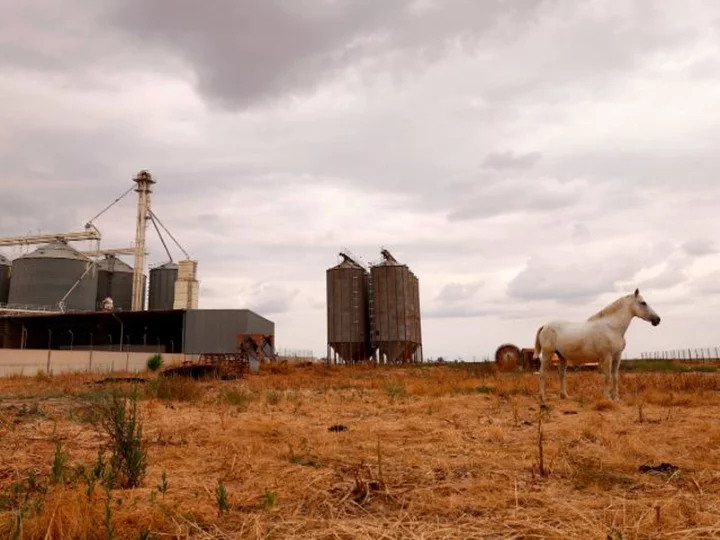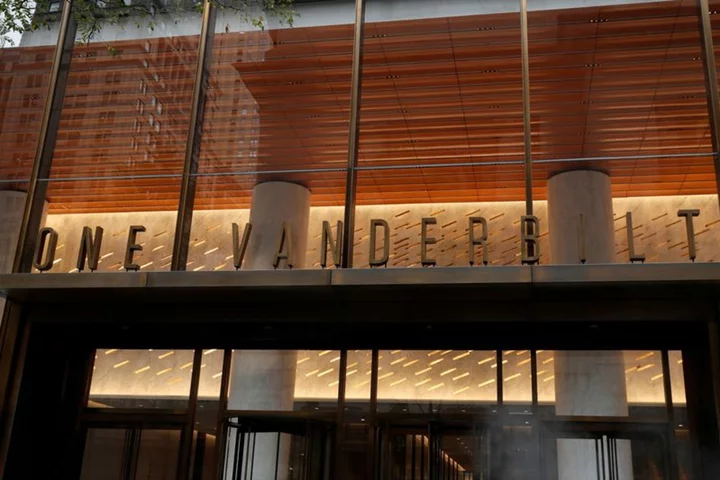With the threat of an unprecedented US debt crisis receding fast, the global economy looks to have dodged a huge shock. But there are still plenty of storm clouds darkening the outlook.
US lawmakers in the House of Representatives passed a bipartisan bill Wednesday to raise the debt ceiling and allow the government to continue to pay its bills. It still requires the approval of the Senate, but the risk of a catastrophic default that could have sparked a global market meltdown has all but disappeared.
While an immediate crisis has been avoided, the litany of problems that had been temporarily overshadowed by the specter of a US default — among them, high inflation, rising interest rates and sluggish growth — haven't gone away.
Even with the "worst-case scenario" off the table, "we are still looking into a scenario of a global slowdown," said Carsten Brzeski, global head of macro research at Dutch bank ING.
There is already evidence that economic growth is stuttering in the United States and China — the world's number one and two economies.
The US economy grew far below expectations in the first quarter and data Wednesday showed factory activity in China slumped in May to its weakest level since the country ended its zero-Covid policy five months ago.
It's the latest sign that China's economic recovery is losing steam, hamstrung by feeble domestic demand, rising unemployment, and a deep slump in its property sector.
That in turn gives Germany little hope of an easy exit from its own downturn because China is its most important trading partner. Germany slipped into recession in the first quarter as last year's energy price shock took its toll on consumer spending.
A protracted slowdown in Europe's biggest economy would spell trouble for the rest of the region, which only narrowly avoided a recession at the start of the year.
Already, momentum in France, which has enjoyed a strong economic recovery since the pandemic, is slowing. Consumer spending fell for the third consecutive month in April, official data showed Wednesday.
"We can now say that the second quarter got off to a poor start," said Charlotte de Montpellier, a senior economist at ING. "It is clear that the French economy is slowing sharply."
Inflation still too high
Against that backdrop, inflation has eased in Europe's second biggest economy, mimicking falls in Germany, Spain and Italy. Data for May due on Thursday is expected to show consumer prices across the 20 countries that use the euro rose at a slower pace than in April, when inflation ticked up to 7%.
Inflation has also moderated in the United Kingdom and the United States — to 8.7% and 4.9% respectively — but it remains uncomfortably high for central banks, which target a rate of 2%.
Investors expect policymakers will hike interest rates further in the coming weeks to tame rising prices — both of which act as a drag on the economy.
Inflation increases the cost of everyday goods and services, dampening consumption. At the same time, interest rate hikes make loans and mortgages more expensive, which weighs on spending by businesses and households.
The effect of higher borrowing costs has yet to be fully realized. In a report Wednesday, Deutsche Bank said a wave of defaults among US and European companies was "imminent" because of the tightest monetary policy in 15 years, combined with high debt levels and lower profitability.
Deutsche's analysts said the wave would not peak until late 2024.
Analysis by Capital Economics suggests that less than half the effects of monetary tightening so far in developed markets have been felt in the real economy.
"As tighter financial conditions bite, we expect most major advanced economies to slip into recession and wage and price pressures to cool," group chief economist Neil Shearing wrote in a note on May 15.
"The recessions we are forecasting are relatively mild and should probably qualify as soft landings given the extreme run-up in inflation over the past year," he added.
War, extreme weather
Any recession, however mild, would be made worse by an unexpected shock.
That now seems unlikely to stem from within the US government. But it could still arise from two longstanding threats: the Ukraine war and the climate crisis, both of which pose risks to global supply chains and food prices.
Russian President Vladimir Putin has threatened retribution for rare drone attacks on Moscow Tuesday, which reportedly left two people injured and damaged several buildings.
Ukraine, which is preparing for a long-awaited counteroffensive against invading Russian forces, has denied involvement in the attacks on Moscow.
"What is perhaps likely in the short term, is that Russia will use a hybrid strategy to attack Ukraine and make life uncomfortable for the West," said Michael Bociurkiw, a senior fellow at the Atlantic Council.
This could include "the weaponization of food by restricting ships carrying grain and other agricultural products from Ukraine to western markets," Bociurkiw added.
The war helped drive international food prices to an all-time high last year. Although prices have fallen since, they remain elevated in many countries and have driven extreme hunger in poor nations.
Food inflation is already hovering around record highs in Europe. Devastating floods in northern Italy last month swamped thousands of farms in an area of the country known as "fruit valley." The "once in a century" disaster followed years of severe drought in the region, which compacted the soil, reducing its ability to absorb rainfall.
Another severe drought in southern Europe could make matters worse. "Spain's parched soils and intense drought are afflicting a broad range of crops and threatening to drive food prices higher in many EU countries," Gro Intelligence, a provider of agricultural data, said in a report this month.
Spain is the world's third largest exporter of tomatoes, according to the report. The country also produces wheat, barley, rice and olive oil.









